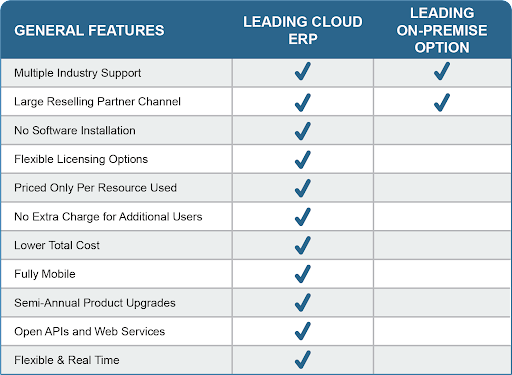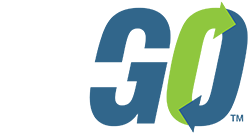Why Choose a Unified ERP & HCM?
Workforce Trends in the New Year:
A new year means fresh perspectives, renewed energy, and new goals in the workplace. It’s the perfect time to explore some of the popular trends that shaped our businesses last year and explore best practices and innovative strategies to help you and your team achieve what’s on your list in 2024.
Cloud-based Enterprise Resource Management (ERP) and Human Capital Management (HCM) software solutions are replacing on-premise solutions. This has been a common theme and is still at the top of strategy lists this year. So, we’ll take a look to see why cloud-based solutions are a necessity and no longer a luxury for businesses looking to improve operations and become more competitive.
Industry-Specific Solutions
It’s common knowledge that one size does not fit all. Each industry has its own set of processes, best practices, and requirements. The same is true for each organization. This is where industry-specific software solutions come into play. They are tailored to meet the unique needs of your sector and can be customized to fit your business.
In short, the best software solutions help streamline operations and make engaging with and managing your team easier. Whether you are balancing construction jobs in different locations, trying to stay up to date with compliance regulations, or manufacturing multiple product lines, cloud-based ERP & HCM solutions help ensure everyone is on the same page.
|
Recommended for you: |
Modernization
Businesses are adopting cloud ERP and HCM solutions to take advantage of their many benefits. The most sought-after features include simpler deployment, lower costs, less need for internal IT resources, elasticity, seamless integrations, the ability to easily add users and tools to accommodate business growth, and new efficient functionality.
Here is a more detailed view.
Simple Cloud-Based Delivery
Let’s talk cloud – It’s not just for tech professionals, and it’s not an obstacle you’ll have to overcome down the road. Cloud-based ERP and HCM solutions are all about making your life easier.
Cloud-based software is hosted on a server and accessed through a web browser, whereas on-premise systems are installed on your business’ server and computers on location.
A cloud-based solution allows your team to access tools and real-time information anywhere, anytime, and on any device without the hassle of installation or complicated set-up processes.
On the other hand, using an on-premise solution means your team can only access data at the location where the software is installed. This limited access can seriously hinder daily operations and productivity, especially for employees working off-site.
Why are cloud-based systems better?
Here is an example breakdown of features for two leading service providers:

How do cloud-based solutions have a lower total cost?
Cost is an important factor for every business, so this can be a significant consideration when deciding what is best for your business.
Cloud-based solutions can help dramatically reduce IT costs simply by eliminating multiple licensing fees, offering open APIs, and reducing the need for on-site technical management and hardware updates.
One of the most significant benefits of a cloud-based system is its elasticity, which is a big factor in reducing costs and scaling for future growth.
Elasticity:
Elasticity means the system can quickly scale up or down to match your business needs.
Imagine you’re a nursery whose peak season is spring when there is a rush to buy flowers and plants. A cloud-based ERP & HCM system can quickly expand to handle the increased workload smoothly. There’s no need for more software installation or on-site hardware updates.
Then, when business quiets down in the winter, it can just as easily scale back. And you’re not stuck paying for unnecessary updates.
|
“Overall, cloud investments have an extremely high success rate (88%) at increasing efficiency and agility, which has been the top strategic business objective overall.” – Deloitte’s US Future of Cloud Survey Report |
Growth & Scaling
While elasticity is beneficial in seasonal circumstances, it also helps businesses scale for long-term growth. If you’re not thinking about growing your business right now, chances are you’re considering the best ways to make it happen in the future.
Either way, when it comes to growth, the ERP and HCM integrations function like your best friend. They meet you where you are, are there for the long haul to help you grow, and will continue to grow with you and help you manage the new challenges and opportunities that pop up along the way.
As fantastic as all of this sounds, knowing how and why it works is essential. What lays the foundation to make these benefits possible are the seamless integrations that improve core processes and enable efficient day-to-day operations.
|
“In the near future, when I have to hire 75 people in 2 months, it’s going to be easier.” – Michelle Martell – HR Director with Muddy Water Dredging |
Integrations
Businesses are integrating new technologies, including IoT, to improve core processes and day-to-day operations. For example, manufacturers and distributors use warehouse management systems that collect data from mobile scanners and smart conveyors to track the movement of goods within the warehouse. Some companies integrate cloud ERP with e-commerce (Shopify & BigCommerce) to improve online order workflows, automatically trigger order fulfillment, update inventory levels, and record payments.
How do integrations help improve core processes and day-to-day operations?
Here are a few examples:
Clear Communication & Data-driven Insights
It may sound cliche, but clear communication is a pillar of any business and the processes that make it successful. Seamless system integrations can help improve communication across the board.
A recent Grammarly survey indicated that “poor communication costs American companies an estimated $1.2 trillion annually, $12,506 per employee per year.” Their partner project with The Harris Poll also showed a strong correlation between effective communication, employee productivity, and job satisfaction.
What does communication have to do with data-driven insight?
Imagine you’re a buyer for a distribution company and tasked with increasing inventory for a specific product your top client is promoting next season. So, you turn to your trusty spreadsheet and adjust the numbers to allow for a sufficient safety supply to meet the increased demand. But when the shipments begin arriving, the warehouse complains that inventory is stacking up and they’re running out of room.
What do you do? You don’t see any errors on your new spreadsheet formulas and entries when figuring the order (thankfully). After looking into it, you realize the historical data you were given to forecast demand for this promotion was wrong. Then comes the chain of inconvenient and possibly costly corrective measures to fix the problem.
An ERP provides centralized data that integrates information across departments – from sales to inventory and customer service. Having that data partnered with performance tracking and other advanced analytics tools to help visualize data could serve as the knight in shining armor to prevent a similar incident from happening.
Data communication is undoubtedly crucial and even helps to make daily tasks easier for employees. And as they say, happy employees are more productive employees. Since your people will be using the ERP & HCM software, their experience with it matters as much, if not more so, than the effectiveness of the tools available.
|
“We found very little that competed with the Workforce Go Performance.” – Tidal Power Services, LLC |
User Experience & Functionality
Have you ever tried to use an app or “helpful tool” that ended up being confusing and not helpful at all? We’ve all been there. There’s nothing worse than being on location and needing to see and reference information you can’t access. If the features that claim to make your life easier just lead to more work, are difficult to use, or don’t function properly, what’s the point?
That’s why modern ERP and HCM solutions focus on being intuitive, accessible, and easy to use. In fact, employees and management both benefit from improved features and functionality.
One of the biggest concerns of HR staff and employees is that a cloud-based system will take an employee’s job away, but that’s not what happens. It ends up making their job easier and helps their day run smoother. As a consequence, they’re freed up to do other tasks that they’ve been waiting to get to.
Despite the initial concern, one of the first praises we hear after implementing a cloud-based ERP and HCM is, “This has been so helpful. Why haven’t I heard of this before?”
Everything mentioned up to this point affects the day-to-day life of your business and employees, but the business’s relationship with its employees is a priority we can’t ignore.
Employee Experience
Creating a positive employee experience has been a priority for workforce planning over the last few years, and it’s a trend that will continue. Finding the suitable ERP and HCM can help businesses handle every aspect of the employee lifecycle and improve recruitment and retention aspects of the process.
Whether you are looking to support a hybrid work model, improve your team’s payroll process, or establish a better system for professional development, HCM integrations can help address each of these. Here are a few examples:
Quick and Efficient Onboarding:
The self-service portal makes the process easier for both management and employees. Managers don’t have to hold employees’ hands through every step, and employees can easily track the entire hiring process to stay up to date.
Once hired, the same portal can be accessed to view relevant training, policies, procedures, and other information when needed. Other processes, like benefits enrollment and timekeeping, also become easier.
Enrolling in and managing benefits:
Generally, employers and employees alike have the same outlook on benefits enrollment. It’s a process they have to survive and just want to get it over with, but it doesn’t have to be quite so painful.
With a cloud-based HCM, your benefits are all in one place. So employees have easy access to enroll and manage their benefits throughout the year. One of the most helpful features of the portal is that they can use it to figure out copays, networks, and other plan-specific information.
Imagine how much time the HR team can save on answering emails and phone calls when employees have access to the information they need in their self-service portal.
Compliance
No system would be complete without compliance capabilities. Compliance is a requirement ingrained in every aspect of operations.
Cloud ERP can dramatically improve regulatory compliance because it offers the ability to define and automate business processes and policies that help companies follow the rules. Most importantly, because an ERP system manages such a broad range of organizational data, it provides the perfect central hub for simplifying compliance and achieving greater efficiency, consistency, accuracy, and transparency.
As you can see, there is much to consider when choosing the best ERP & HCM integration that fits your needs. Since needs and requirements change, it’s critical to choose a solution that has the ability to grow with you, and that’s what a cloud-based ERP & HCM is all about.
